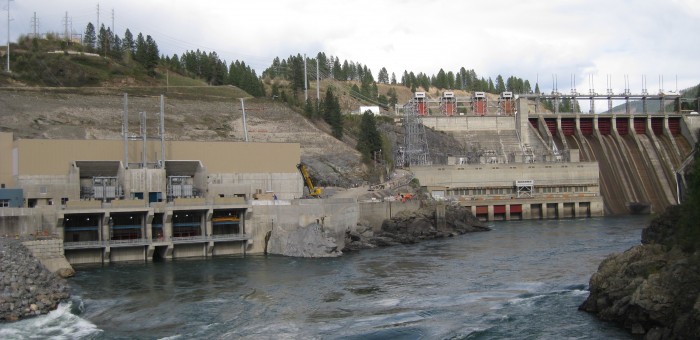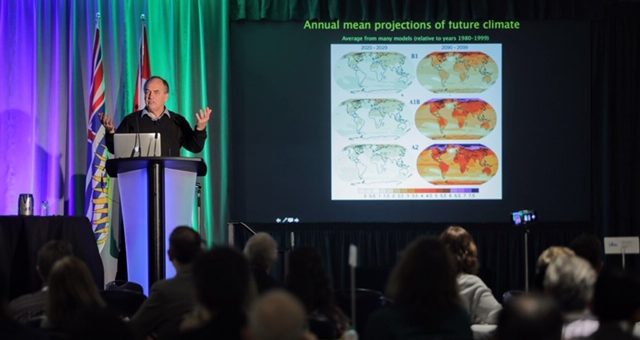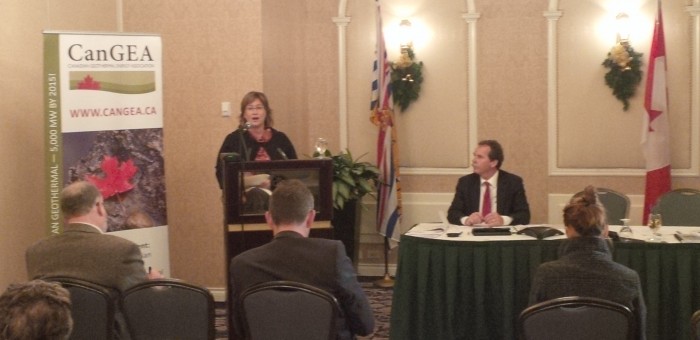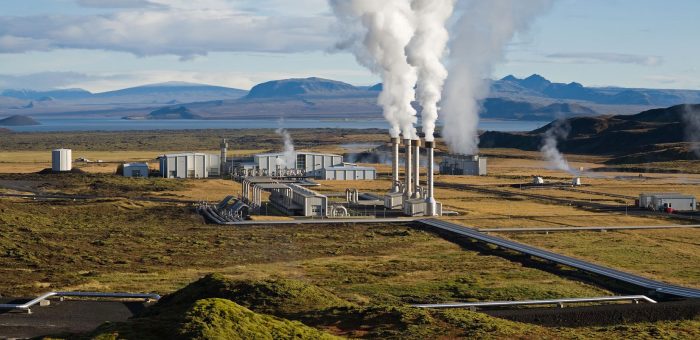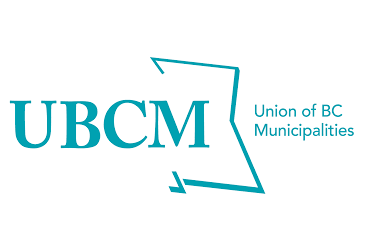Clean Technology
What’s the BC government doing to protect small-scale power producers in BC
Today in the legislature I rose to ask the Minister of Energy, Mines and Petroleum Resources what his government was doing to protect small scale power producers in British Columbia. Many of these power producers are already producing electricity yet they are unable to find a market for it since current regulation means that only BC Hydro is allowed to be the purchaser.
I use the specific example of Silversmith Power & Light Corporation to illustrate one of myriad problems facing the independent power producer sector.
Below I reproduce the video and text of my exchange with the Minister.
Video of Exchange
Question
A. Weaver: Under the NDP government in the 1990s, B.C. Hydro actively courted small-scale power producers to join their grid. One company, Silversmith hydro, received an offer to provide power to the New Denver area, in exchange for the opportunity to sell electricity to green markets. In formally accepting the offer, Silversmith bore the up-front costs associated with connecting to the B.C. Hydro grid.
Despite Silversmith’s sunk costs, B.C. Hydro later backed out of their agreement, compensating Silversmith at junk power rates, which were less than the cost of generation. After Silversmith raised the issue with the B.C. Liberal government, B.C. Hydro offered Silversmith a fair-market price for their electricity, but they only purchased a quarter of their capacity. During this same time period, B.C. Hydro continued to enter into opaque contracts with many large IPPs.
The situation with Silversmith is representative of how B.C. Hydro has dealt with numerous other small-scale power producers, even though many of these companies are considered to be the greenest hydro producers in the province.
My question through you, hon. Speaker, is to the Minister of Energy, Mines and Petroleum Resources: when is the government planning to rectify this situation and begin to deal more fairly with small-scale hydro producers in this province?
Answer
Hon. B. Ralston: Thanks to the member for the first question I’ve had in my new role as the Minister of Energy, Mines and Petroleum Resources.
Let me say that the B.C. Liberals chose to sign a series of sweetheart deals with their friends in the independent power sector, which cost every B.C. Hydro customer an extra $200 a year. In total, given the length of these contracts, people will pay, in British Columbia, a staggering $16 billion on unnecessary costs, all because the old government put their friends first.
They made a huge mess at B.C. Hydro and left people to pay for it. Some of the fallout is what is referred to in the member’s question. Under their watch, power rates went up by 70 percent. Given the chance, they wouldn’t have lowered hydro rates. Their plan would have seen people’s rates increase more than twice as much compared to our approach.
We’re focused on cleaning up the mess the old government left at B.C. Hydro and making it work for people. Making life affordable for people is a top priority for us as we work through phase 1 of B.C. Hydro review. As part of this work, B.C. Hydro is taking a prudent, case-by-case approach to deciding whether to renew expiring energy purchase agreements with independent power producers ensuring that prices are cost-effective for taxpayers.
I’m pleased to say that, as a result of this hard work, we’ll be able to apply for a rate reduction. This is the first time B.C. Hydro has been able to do this in decades. If our application is approved, before the independent regulator….
Interjections.
Hon. B. Ralston: You can’t take more good news?
If our application is approved, B.C. Hydro rate bills for consumers in British Columbia, for our citizens, will be 55 percent lower than what the old government wanted to charge.
We’ve also launched phase 2 of our review, to make sure it’s working for British Columbians.
Interjections.
Hon. B. Ralston: I’m not sure whether he’ll get a second question, so I want to make sure I give a full answer.
In our review, we’ll look at CleanBC’s electrification targets, new technologies, new rules for Indigenous nations, and looking for new opportunities at B.C. Hydro.
Supplementary Question
A. Weaver: Thank you to the minister for his answer. Unfortunately, to the minister’s answer, under his government the standing offer program under B.C. Hydro has been cancelled. As a direct consequence of that, a myriad small companies who have invested millions upon millions have now got lost capital. They are seeking indemnity, and they are seeking that money to be refunded through the court system. This has sent a very strong signal to the independent power producers, the small-scale producers in this province, that British Columbia is not a friendly place for small-scale hydro.
To the minister: what is he going to do to ensure that B.C. Hydro actually steps up and starts to rebuy those contracts and stops trying to squash each and every one of these small-scale producers, which exist in British Columbia already, with some capital?
Answer
Hon. B. Ralston: Let me repeat or recapitulate what I said last time. I think it bears repetition for sure. B.C. Hydro is taking a prudent, case-by-case approach to deciding whether to renew existing purchase power agreements with independent producers, ensuring prices that are cost-effective for taxpayers. And as part of the phase 2 review, the report is not yet in. I’m awaiting it.
We will be looking at making sure that we meet CleanBC’s electrification targets, new technologies, new roles for Indigenous nations, and looking at new opportunities for B.C. Hydro. That final report will be received very shortly.
So we will continue this important work while keeping rates affordable for British Columbia citizens.
Clean energy in British Columbia: The Opportunity
On Friday, November 8 I had the opportunity to deliver a keynote address over lunch to delegates of the Clean Energy BC, Generate 2019 Conference. As evident in the video and slides of my presentation (reproduced below), I started the talk with a framing of what is happening in the climate system, why we should care about it and what has been done in terms of greenhouse gas mitigation. I then moved on to a discussion of potential opportunities in electrification and innovation within the emerging field of negative emission technologies.
Presentation Video
Slides Used in presentation
1.  |
2.  |
3. 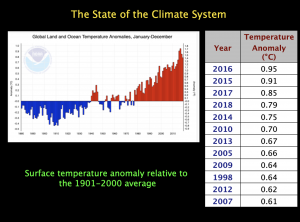 |
4. 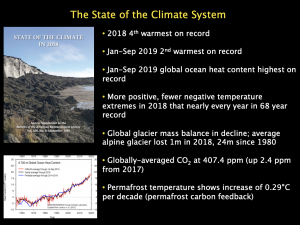 |
5. 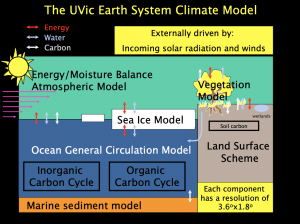 |
6. 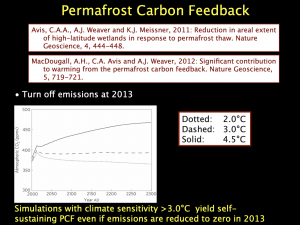 |
7. 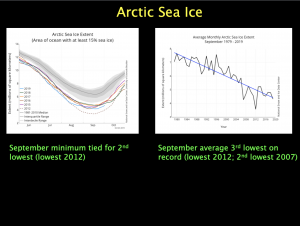 |
8. 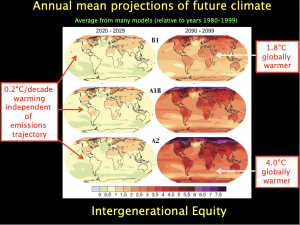 |
9. 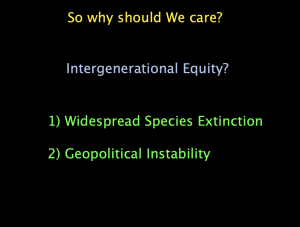 |
10. 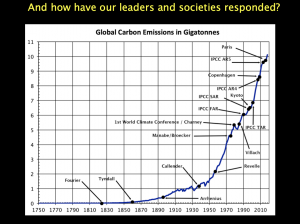 |
11. 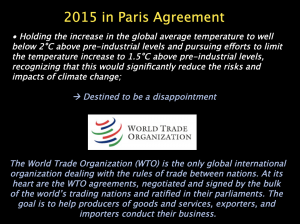 |
12. 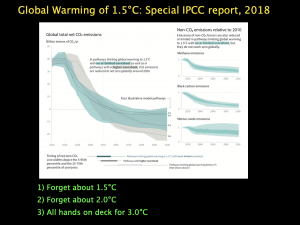 |
13. 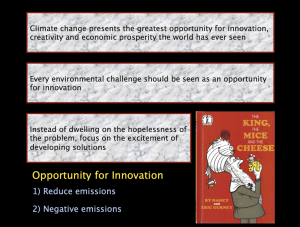 |
14.  |
15. 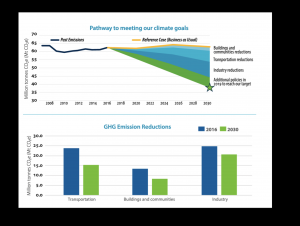 |
16. 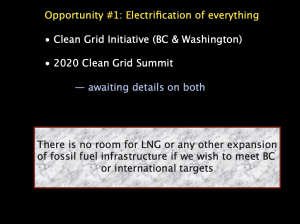 |
17. 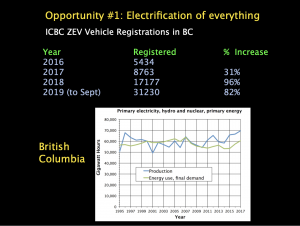 |
18. 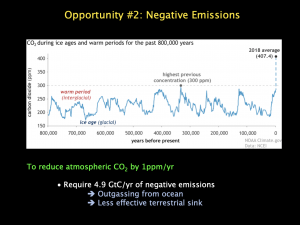 |
19. 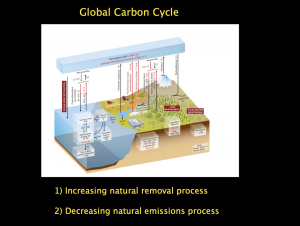 |
20. 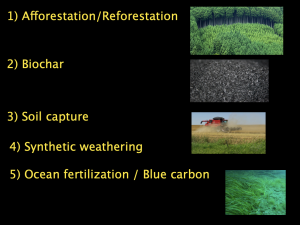 |
21. 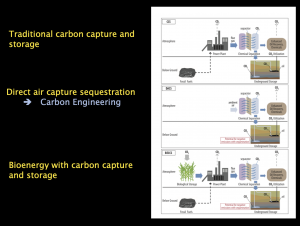 |
22. 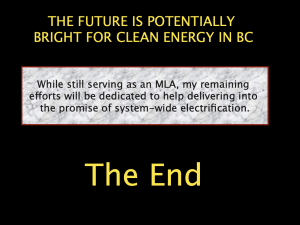 |
Why is British Columbia not exploiting its geothermal energy resources?
Today in the Legislature I asked the Minister of Energy, Mines and Petroleum Resources what her ministry is doing to encourage the use of our outstanding geothermal resources. Readers of this site will know that since as early as 2014, I have been trying to get both the BC Liberal Government and the present BC NDP government to recognize the incredible opportunity that geothermal energy innovation and production offers British Columbia.
Below I reproduce the video and text of our exchange.
Video of Exchange
Question
A. Weaver: Yesterday I asked the Minister of Jobs, Trade and Technology what his ministry was doing to encourage a strategic approach to transitioning away from the reliance on fossil fuels development in northern B.C. He talked about the importance of innovation. I agree. But there are barriers to innovation in B.C., and those barriers lie in B.C. Hydro.
Take the Borealis geothermal project in Valemount, for example. The member for Prince George–Valemount and I have been trying to get government to recognize the enormous potential for this project to showcase innovation in B.C.’s clean energy sector. British Columbia is the only jurisdiction in the Pacific Rim that isn’t using its geothermal resources. It strikes me as a no-brainer. Community support is strong. Valemount is at the end of an existing B.C. Hydro line, and with Glacier Destinations moving forward, enhanced local power production on an already stretched and often intermittent line will be required.
My question is this to the Minister of Energy, Mines and Petroleum Resources. Could she please explain what her ministry is doing to encourage the use of our outstanding geothermal resources?
Answer
Hon. M. Mungall: The opportunity for geothermal needs to be proven in B.C., and there are some companies that are doing just that. They’re working to prove up the geothermal resources that have been identified. Borealis is one of them. As the member will know — and the member for Prince George–Valemount — they received a permit just over a year ago to start doing that work. They actually have a new permit before the ministry. I look forward to seeing the recommendation from the ministry in terms of how to proceed with that permit so that they can do the work that they’ve been doing to prove up this opportunity with geothermal.
Supplementary Question
A. Weaver: The reality is that on the ground nothing is being done, not because of lack of industry or community support but rather because of cumbersome regulatory barriers and the absence of a champion within this government. Geothermal drilling is being regulated by the Oil and Gas Commission via rules that don’t reflect the practice within the international geothermal sector.
There is no ability for geothermal projects to lever existing federal funds without a strong provincial commitment. Our geothermal resources have the potential to diversify and decarbonize B.C.’s energy systems, provide energy with minimal environmental impact footprint — probably the smallest environmental footprint of any type of resource like that — create jobs and prosperity in northeastern B.C. and provide a showcase for innovation in our clean energy sector.
My question again is to the Minister of Energy, Mines and Petroleum Resources. When will her ministry start streamlining the regulatory process and start encouraging, as opposed to discouraging, British Columbia’s outstanding geothermal sector?
Answer
Hon. M. Mungall: My ministry has done nothing to discourage the opportunities with geothermal — in fact, quite the opposite.
Interjections.
Mr. Speaker: Members.
Hon. M. Mungall: I’m not too sure why the Liberals are all worked up about this particular issue, hon. Speaker. It’s not like they ever discovered geothermal when they were in office. The reality is that there’s quite a bit of science here that needs to be done, and it’s about a process in terms of actually making sure the resource is sufficient enough, hot enough, to actually generate electricity from it. That needs to be done. And that’s exactly what Borealis and other companies who are interested in doing this work in British Columbia are given the opportunity to do. I’m very glad that they’re here and making those investments, and I look forward to working with them going forward.
What’s BC doing to promote a low carbon economy in Northern BC?
After asking the Minister of Environment and Climate Change Strategy yesterday about the inconsistency between British Columbia’s CleanBC plan to reduce greenhouse gas emissions and the fact that the Deputy Minister of Energy, Mines and Petroleum Resources recently went to Japan to tout the idea of even more LNG development in B.C., I posed a supplemental question to the Minister of Jobs, Trade and Technology. In that question I asked what his ministry was doing to encourage a strategic approach to transitioning away from the reliance on fossil fuel development in northern British Columbia.
Below I reproduce the video and text of our exchange. The BC Liberals were once more quite boisterous in their heckling.
Video of Exchange
Question
A. Weaver: People in northern British Columbia will experience the impacts of climate change faster and more profoundly than those of us on southern Vancouver Island. This region has long been affected by the boom-and-bust cycles of fossil fuel development, where barely viable multinational entities are kept afloat through never-ending and ever-increasing corporate welfare. A just transition for rural communities away from their dependence on fossil fuel extraction and uncertainty in commodity cycles would create stable, long-lasting local prosperity. As Forbes magazine just noted this past summer, transitioning to a low-carbon economy represents the single biggest business opportunity in human history.
My question is to the minister….
Interjections.
A. Weaver: I understand there’s heckling from the Luddites opposite, who still are struggling with the issue of the science of climate change, but please give me my chance to actually ask the question of government.
The question is to the Minister of Jobs, Trade and Technology. What is his ministry doing to encourage a strategic approach to transitioning away from the reliance on fossil fuel development in northern B.C.?
Answer
Hon. B. Ralston: Our government is committed to encouraging innovation in the British Columbia economy and building a sustainable economy that benefits everyone. The tech sector is a strong and vital component of our diverse economy, employing over 120,000 people in British Columbia. But it’s important that that growth be distributed regionally, and indeed, it is being distributed regionally. There are several programs in place that are doing just that.
Innovation Central Society — the member for Prince George–Valemount will be familiar with this — is Innovate B.C.’s central technology accelerator for northern British Columbia. Through the Innovation Central Society, direct funding of $100,000 has been provided to support 14 local companies helping the region’s technology sector grow and thrive.
There are other companies. I’ll give another example, of a company in Smithers. Jet Controls is a building control dashboard that uses HVAC data and Environment Canada weather data to predict when outdoor climate will change and precondition a building’s geothermal system to be ready for whatever cooling or heating demand is placed on the system.
It’s important that the range of technology options be distributed throughout the province, and that’s just what we’re doing.
Speech to delegates at the 116 th Union of BC Municipalities Convention
Today I was afforded the opportunity to present to delegates at the 116th Union of BC Municipalities Convention in Vancouver. Below I reproduce the complete text (with links) of this speech.
Text of Speech
It’s a great honour for me to be able to once more address you, the delegates to the UBCM.
You know, two weeks ago, and just 15 minutes before I was supposed to give a keynote at the Canadian Propane Association BC Seminar in Langley, I was hit with acute vestibular neuritis which put me in hospital for 5 days.
The irony is not lost on me…but you can imagine how grateful I am to be up and on stage here today.
While I am expected to make a complete recovery in a few weeks, I had to limit my activities which meant that my scheduled meetings with local government representatives this week were all cancelled. For that I sincerely apologize.
In the audience today there are many politicians.
Some of you lean left.
Some of you lean right.
In my case, the vestibular neuritis has left me tilting right and left on a second by second basis but I look forward to stabilizing somewhere in the middle shortly.
The one silver lining in all of this is my incapacitation couldn’t have come at a better time… right at the start of the 2019 Rugby World Cup!
————
There’s a lot of new faces in the crowd this year so for those of you who don’t already know my background I’d like to add that prior to joining the legislature in 2013 as the lone BC Green MLA, I was the Lansdowne Professor and Canada Research Chair in Climate Modelling and Analysis at the University of Victoria.
I served as a Lead Author in the last four United Nations Intergovernmental Panel on Climate Change Assessment reports.
I ran for election in 2013 as I could no longer watch what was happening to our province from the sidelines.
I ran as a point of principle, never actually expecting to get elected (after all no Green Party politician anywhere in Canada had ever before been elected at the provincial level).
I ran on a platform of evidence-based decision-making to counter the decision-based evidence-making rhetoric espoused by so many of our political leaders.
I ran on a platform of ensuring that we focus on the long-term consequences of our decisions instead of solely being fixated on what it would take to get reelected.
I ran to offer British Columbians a vision of social, economic and environmental prosperity grounded in the incredible opportunity afforded us by the challenge of global warming.
And here we are today, two years after the 2017 election delivered a minority government with my two BC Green Caucus colleagues and I holding the balance of responsibility. It’s been a remarkable journey.
Keeping with this year’s theme of ‘resilience and change’, I want to speak to you both as a climate scientist and as a political leader.
In doing so I hope to convince you that each and every challenge our province faces needs to be embraced and thought of as an incredible opportunity for innovation.
And innovation is the foundation of any modern economy.
First, the science.
Since we met last year, a number of sobering reports have been released:
The first was the 2018 IPCC special report in which the world’s leading climate scientists warned there are only a dozen years for global warming to be kept to a maximum of 1.5°C, beyond which even half a degree will significantly worsen the risks of drought, floods, extreme heat and poverty for hundreds of millions of people.
A few months later, Canada’s Changing Climate was published by the Federal government.
The report noted that Northern Canada is warming at twice the global rate and highlighted BC as being particularly vulnerable to drought, glacial loss, sever wildfires, and to sea level rise, which will salinate farm land.
Shortly after that we had the report from the UN Intergovernmental Science-Policy Platform on Biodiversity and Ecosystem Services that stated, in stark terms, that we are in the midst of an extinction crisis with a million species likely disappearing within decades.
The consequences of which would be devastating for ecosystem stability and food production.
Then we got the report from the UN’s special Rapporteur on extreme poverty and human rights.
Professor Alston said the world is on course for “climate apartheid,” where the rich will buy their way out of the worst effects of global warming and the poor will suffer. Even under the best-case scenario, he wrote, hundreds of millions will face food insecurity, forced migration, disease, and death.
Staying the course will be disastrous for the global economy and pull vast numbers into poverty.
Most recently, the province quietly released their Strategic Climate Risk Assessment for British Columbia.
In it, severe wildfires, seasonal water shortages, and heat waves are the three highest-ranked risks facing the province in terms of severity, magnitude, and likelihood. Ocean acidification, glacier mass loss, and long-term water shortages also top the list.
In the span of just a few centuries, Earth has made a transition from a past, when climate affected the evolution of human societies, to the present, in which humans are affecting the evolution of the climate.
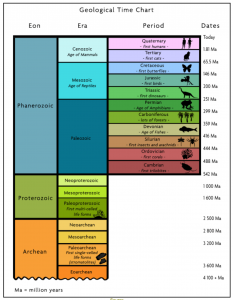 Starting in the late Paleozoic, more than 300 million years ago, and extending through Mesosoic (known as the Age of the Reptiles), the world’s great coal, oil and natural gas reserves were formed. In doing so, carbon dioxide was drawn down from the atmosphere over a period of tens of millions of years.
Starting in the late Paleozoic, more than 300 million years ago, and extending through Mesosoic (known as the Age of the Reptiles), the world’s great coal, oil and natural gas reserves were formed. In doing so, carbon dioxide was drawn down from the atmosphere over a period of tens of millions of years.
Today, we are turning back the clock by returning that carbon to the atmosphere in a matter of a few decades.
As I stated in last year’s address: elected leaders are at a pivotal moment in human history. We are responsible for deciding what path the future climate will take.
That is not something I say lightly. I feel the pressure of that responsibility in everything I do. It weighs heavily on me. But I know I am not alone in that and, while unpleasant, it’s also a good sign.
I can sense, for the first time in my career, that a change in the tide is coming.
In every challenge, there is opportunity. The greater the stakes, the higher the potential. British Columbians are eager for innovation and excited about building a sustainable economy.
Young people, in particular, have made this abundantly clear over the last year.
Millions of students, including many hundreds on the lawn of the legislature last Friday, are demanding elected officials protect their future.
You will die of old age, one sign read, I will die of climate change.
People are ready to support leaders who take climate action seriously.
Change is coming whether we like it or not, so let’s choose to be courageous.
To the opportunities I promised you earlier:
We are immensely fortunate to live in British Columbia. It is quite literally one of the best locations on the planet from which to navigate the climate related challenges ahead.
To start, BC has three strategic advantages over virtually every other region in the world.
- The quality of life and natural environment allows us to attract and retain some of the best and brightest minds from around the globe — we are a destination of choice.
- We have a highly skilled and educated workforce. Our high school students are consistently top ranked internationally. They are smart, well trained and they are ready to go to work. And we have exceptional post secondary institutions throughout our province.
- We have access to boundless renewable energy, fibre and water like no other jurisdiction in the world. We have incredible potential to create clean, renewable energy and forestry sectors to sustain our economy.
Transitioning to a carbon neutral world doesn’t mean going back to the dark ages. It means transitioning to a cleaner, sustainable society where economic, social and environmental concerns are central in all our decision making.
In fact, if we start right now, we stand a decent chance of transforming society without huge disruption.
What I am describing is not an impossible utopia. Every example listed is grounded in current economic trends, scientific evidence, and already established best practice.
We have so much to gain. It’s not just possible that the transition to a clean economy could create jobs. It is inevitable – Jobs that are inspired, important, and valuable. This shift can be the vehicle to deliver a more just, equitable, and healthy society.
To capitalize on these possibilities, we need to start planning beyond the next election cycle. We need to focus on building a new economy that works for all of us — not just the privileged few.
Policies must be based on principles and evidence, not political calculation and opportunism.
And as government leaders we must collectively do everything we can to develop policies that promote, rather than hinder innovation in or economy.
 Over the last two years, my team and I have been working with Minister Heyman to design CleanBC, our ambitious economic plan to build a thriving, climate-responsible and climate-resilient economy.
Over the last two years, my team and I have been working with Minister Heyman to design CleanBC, our ambitious economic plan to build a thriving, climate-responsible and climate-resilient economy.
With no silver-bullet solution to solving climate change, it is a collection of policies, incentives, targets, and regulations that will revive our economy and, if fully implemented, collectively achieve a 40% reduction in GHG emissions (from 2007 levels) by 2030.
It includes transitioning to 100% zero-emission vehicles by 2040, demanding far greater energy efficiency in both new and existing buildings, and investing significantly in training workers for a low-carbon economy.
Governments talk a lot about competitiveness, saying if we ask too much of companies they will leave.
But I have never understood why we want to be competing with other jurisdictions who are willing to sacrifice their clean air, land and water or willing to commit human rights abuses, all in order to see who can extract their resources cheaper and faster.
I believe government should be playing a more active role in supporting the type of economy we want to build. Not simply managing the one we have, ignoring the challenges on the horizon.
I don’t want to drag BC into a race to the bottom by subsidizing the tired, and dwindling industries from the last century.
I want to compete in an entirely different arena – for who can be the best, leanest, most efficient, with the healthiest, happiest citizens.
Thoughtfully designed policies can send signals to the market and spur innovation.
Many companies in BC are already leading the way within their sector.
At the tech summit earlier this year, I had the opportunity to moderate a panel with a number of inspiring companies who are pushing the envelope – creating high quality jobs and harnessing the power of innovation to help us respond to the climate crisis.
MineSense, for example, is one I talk about often because they epitomizes the type of approach I am talking about. Their real-time, sensor-based ore sorting technologies allow them to analyze a rock face and determine whether it is economical to ship it to the crusher, or if it should be put aside for fill.
Investing in innovation has made their process smarter, more efficient, and saved them money along with saving water.
They can export their product, but they have also been able to export the technology.
 Another inspiring BC company is General Fusion. General Fusion is a truly groundbreaking company, at the forefront of clean tech.
Another inspiring BC company is General Fusion. General Fusion is a truly groundbreaking company, at the forefront of clean tech.
Based in Burnaby, they are working towards commercializing affordable, abundant, safe and emission-free electricity from fusion energy. This company has the potential to transform the world through transforming our energy supply.
Carbon Engineering is a Canadian company that has developed innovative technology to create liquid fuels from atmospheric carbon dioxide, who set up shop in Squamish a few years ago.
Their potentially revolutionary technology also has the ability to capture and sequester human produced carbon dioxide directly from the atmosphere. A BC company that has become famous around the world.
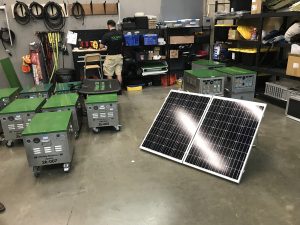 Then there are Portable Electric and Corvus Energy, two Vancouver-based success stories delivering mobile and marine electricity storage systems, respectively.
Then there are Portable Electric and Corvus Energy, two Vancouver-based success stories delivering mobile and marine electricity storage systems, respectively.
Portable electric’s battery power stations are a clean alternative to diesel generators are already being used to power everything from festivals to film sites.
And let’s not forget Unbuilders, a growing team of highly skilled tradespeople who have recognized opportunity in deconstruction.
Instead of demolishing old homes, they deconstruct them piece by piece and salvage vast quantities of historical old growth and other used building materials.
The sale of the residuals means it ends up costing less to deconstruct an old building than demolish it.
What an incredible example of innovation in the building sector. And it is all BC-based.
I could talk about my favorite BC-based, 21st Century companies all day, but noting the time, I’ll just mention one other.
Structurlam: What an amazing example of a thriving BC based business in the value-added forest sector.
 Their two main products Glulam and Crosslam are 100% engineered-wood laminations that are used as replacements in building construction for steel and cement, respectively.
Their two main products Glulam and Crosslam are 100% engineered-wood laminations that are used as replacements in building construction for steel and cement, respectively.
And they are committed to source lumber from BC-based companies like Kaleshnikoff Lumber Co. Ltd., a family owned business located in Tarry’s BC that was started in the late 1930’s by the children of Doukhobour immigrants who came to Canada in 1911.
These companies form the foundation of a strong, resilient, economy. Prosperity and jobs remain local as they they build on our strategic strengths ensuring that value added, technology and innovation are what we export.
Local governments, too, are already proving what is possible.
Last year, 50 local governments reported achieving carbon neutrality.
Last summer, the City of Surrey broke ground on the first community centre in North America to achieve Passive House certification.
In the District of Lillooet, community leaders implemented a plan to improve road safety for pedestrians and cyclists by expanding infrastructure and enhancing bike lanes.
Cities including Victoria, Vancouver, and Tofino are leading the way on taking action on single use plastics – a policy, the courts have made clear, that requires provincial leadership.
Paving the way for you to succeed is something I take very seriously.
I have been working with Minister Heyman on the Climate Change Accountability Act, to be tabled this fall, in the hopes that it, too, will bolster and support your ability to tackle this head on.
I look to you, as local leaders, to pick up the work I have started and make it better. Take in further, adapt it to the opportunities and needs in your community.
You know better than anyone how to be a champion for your constituents. I am asking you today, to be courageous, ambitious, and innovative.
Think further into the future and govern not just for your term, but for your children and grandchildren.
This is the moonshot of our generation.
 I’d like to end by reading the concluding paragraph of my book Generation Us: The Challenge of Global Warming that I wrote nearly a decade ago:
I’d like to end by reading the concluding paragraph of my book Generation Us: The Challenge of Global Warming that I wrote nearly a decade ago:
“Global warming has been branded an environmental problem. But it is really an economic and social problem. We’ve spent too much time living within a culture of global warming fear and denial. It’s time to recognize global warming for what it is: the most self-empowering issue we will ever face. Every consumer of energy is part of the problem. Every person is therefore part of the solution. We are entering an age of creativity and innovation unlike any that modern society has experienced before. Rather than fearing this change we need to embrace it. And the change starts in each and every one of our households. The time for Us is now.”
Thank you.

